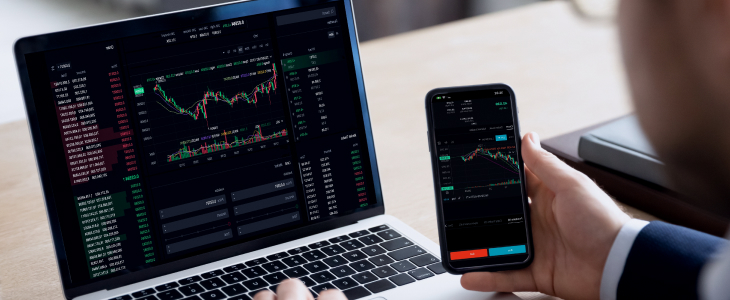
Navigating Forex Trading Time Zones: Maximize Your Trading Potential
In the fast-paced world of forex trading, understanding time zones is crucial for traders aiming to optimize their strategies and capitalize on market movements. With forex markets operating 24 hours a day, navigating time zones effectively can give traders a significant edge. Whether you are based in Africa, Europe, Asia, or the Americas, knowing when to trade can enhance your potential for profit. In this article, we will delve deep into the intricacies of forex trading time zones and how they influence trading patterns. For traders in Uganda, local forex trading time zones Uganda Brokers can provide essential insights into market activities aligned with your time zone.
The Global Forex Market: An Overview
The forex market is unique in that it operates continuously throughout the week, allowing traders to engage at any hour. This is primarily due to the global nature of forex trading, where major financial centers are distributed across different time zones. The major financial hubs include New York, London, Tokyo, and Sydney. Each of these centers becomes active at varying hours, leading to increased volatility and trading opportunities during their respective time slots.
The Four Major Forex Trading Sessions
Understanding the four major trading sessions—Sydney, Tokyo, London, and New York—is fundamental for any trader. Each session presents unique opportunities and characteristics. Let’s explore each one in detail.

1. Sydney Session
The Sydney session opens the forex market at 10 PM GMT and closes at 7 AM GMT. Although it is the least active session due to lower trading volumes, it sets the tone for the day. The Australian dollar, New Zealand dollar, and other South Pacific currencies are primarily traded during this session. Sydney also sees the first reactions to economic news released overnight, making it an essential session for traders interested in early market movements.
2. Tokyo Session
Following the Sydney session, the Tokyo session begins at 12 AM GMT and runs until 9 AM GMT. As the largest financial market in Asia, it witnesses significant trading in the Japanese yen and other Asian currencies. During this session, traders often react to economic releases from Japan and other Asian economies, making it a crucial time for those who focus on Asian market movements.
3. London Session
Opening at 8 AM GMT and closing at 5 PM GMT, the London session is often considered the most important trading session due to its high volume and liquidity. The London market overlaps with both the New York and Tokyo sessions, leading to increased volatility. Currency pairs involving the euro, British pound, and Swiss franc are more actively traded during this period. For forex traders, the London session presents ample opportunities to enter and exit trades as major economic announcements are released.
4. New York Session
The New York session opens at 1 PM GMT and closes at 10 PM GMT. This session significantly overlaps with the London session for a few hours, resulting in heightened trading activity. The U.S. dollar is the primary focus during this period, along with major currency pairs like EUR/USD and GBP/USD. Economic indicators released by the U.S. have a substantial impact on the forex market and can create rapid price movements, providing lucrative trading opportunities.
Understanding The Forex Market Hours and Their Impact

The 24-hour market means that traders can take advantage of price movements anytime; however, this also means that the best times to trade vary based on the time zone you are in. Depending on your location, certain sessions might suit your trading style more than others.
Characteristics of Different Trading Sessions
Each trading session possesses unique characteristics that influence price action:
- High volatility during overlaps: The overlap of London and New York sessions usually sees the highest volatility, presenting opportunities for quick scalping or day trading.
- Low volatility during off-hours: Sessions outside of major overlaps may experience lower volatility, which can be beneficial for long-term traders or those employing swing trading strategies.
- Economic Releases and News Impact: Knowing when significant economic news will be released is crucial, as it can drastically affect market movements, especially in the London and New York sessions.
Tips for Trading Across Different Time Zones
To maximize your trading potential across different time zones, consider the following tips:
- Identify Your Best Trading Hours: Determine which trading sessions align best with your trading strategy. If you prefer volatility, focus on times when the London and New York sessions overlap.
- Use Automated Trading Tools: Automated trading systems can help execute trades during optimal times, even when you are not actively monitoring the market.
- Stay Informed: Follow economic calendar events that coincide with your preferred trading hours to anticipate market movements effectively.
- Practice Good Risk Management: Regardless of your chosen sessions, always manage your risk carefully, especially during periods of high volatility.
Conclusion
Understanding forex trading time zones is essential for any trader looking to optimize their performance in the market. The forex market’s global nature provides numerous opportunities if utilized wisely. By aligning your trading strategies with the active hours of various sessions and staying informed about market developments, you can enhance your trading potential. As you navigate this dynamic landscape, remember that local brokers like Uganda Brokers can offer valuable insights tailored to your specific needs and trading objectives.
